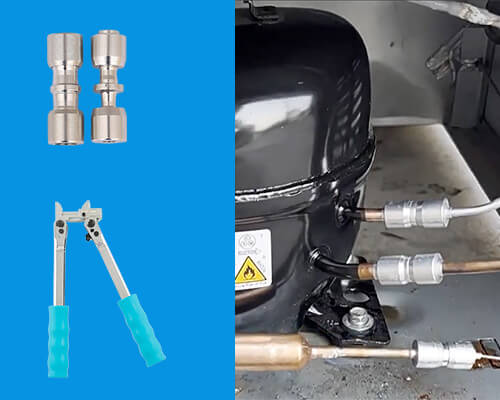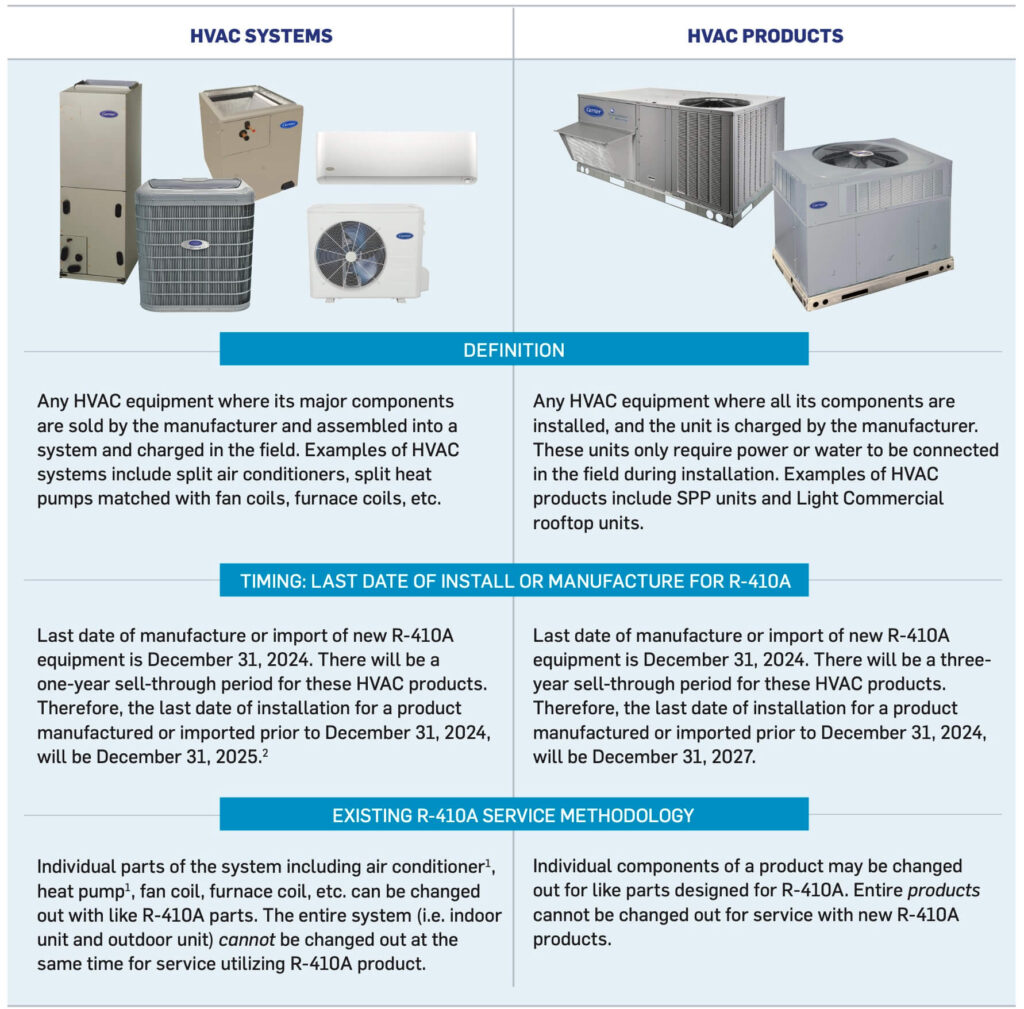Use R410A in Puron Plumbing System
R-410A, commonly known under the brand name Puron, has become a widely preferred refrigerant in modern heating, ventilation, and air conditioning (HVAC) systems due to its superior energy efficiency and environmental benefits.
The use of R-410A refrigerant in Puron plumbing systems has revolutionized HVAC system efficiency and environmental compliance. As experts in the field, we aim to provide a detailed exploration of the role, benefits, and application of R-410A in Puron systems.

In this article, we will discuss its compatibility, advantages, application techniques, and important considerations when using R-410A in Puron plumbing systems.
What is R-410A Refrigerant?
R-410A, commonly marketed as Puron, is a hydrofluorocarbon (HFC) refrigerant widely used in modern heating, ventilation, and air conditioning systems. Unlike its predecessor, R-22, R-410A does not contribute to ozone layer destruction. Its properties include:
High efficiency – operates at higher pressures, which improves system performance.
Environmental compliance – zero ozone depletion potential (ODP) and lower global warming potential (GWP) compared to older refrigerants.
Improved heat transfer – supports energy-efficient cooling and heating.
Can You Use R410A in Puron Plumbing System?
R410a (also known as Puron) cannot be used in a plumbing system as it is specifically designed for heating, ventilation, and air conditioning (HVAC) systems and is not compatible with the materials and design of plumbing systems – attempting to do so could cause significant damage and safety hazards.
Key points to remember:
Purpose: R410a is a refrigerant used in air conditioners and heat pumps, not plumbing systems.
Material incompatibility: Plumbing pipes and fittings are not designed to withstand the high pressures and chemical properties of R410a, which could lead to leaks or system failure.
Safety concerns: Using the wrong refrigerant in a system can create dangerous situations, including possible explosions or toxic fumes.

Why R-410A is the Ideal Choice for Puron Plumbing Systems
Environmental Benefits
R-410A complies with international regulations, such as the Montreal Protocol, which promotes the sustainable use of refrigerants. It ensures compliance with modern standards while reducing the carbon footprint.
Improved System Performance
R-410A allows Puron plumbing systems to operate at higher efficiency levels due to its superior heat transfer capabilities. This results in:
- Faster cooling and heating cycles.
- Lower energy consumption.
- Longer lifespan of HVAC components.
Increased Cooling Efficiency
Systems using R-410A achieve higher energy efficiency ratings (SEER and EER), which reduces operating costs while maintaining consistent indoor comfort.
Technical Considerations When Using R-410A
System Compatibility
Pressure Requirements: R-410A systems operate at significantly higher pressures than R-22. Make sure all components, including piping and valves, are rated for these pressures.
Lubricants: R-410A requires polyolester (POE) oils, which are more hygroscopic than traditional mineral oils. Keep the system dry to prevent contamination.
Installation and Maintenance Tips
Tools: Use specialized tools, such as pressure gauges and recovery machines, designed specifically for high-pressure refrigerants.
Leak Detection: Perform rigorous leak testing during installation and maintenance, as R-410A leaks can reduce system efficiency.
Charging Process: Always charge refrigerant in liquid form to maintain the correct refrigerant mixture composition.
Transitioning from R-22 to R-410A
For systems upgrading from R-22, retrofitting is not an option. R-410A systems require a complete overhaul due to differences in pressure and lubricant compatibility. Key steps include:
Replacing all system components with R-410A-compatible parts.
Flushing the system to remove old oil and refrigerant residue.
Testing for leaks and proper operation before charging with R-410A.
Read Also: How Deep to Bury Water Line – Water Line Burial Depth
Why R-410A is the future of HVAC systems
As environmental regulations tighten and energy efficiency standards rise, R-410A is positioning itself as the refrigerant of choice for modern HVAC systems. Its unique combination of environmental friendliness, efficiency and reliability ensures that Puron systems using R-410A are equipped to meet current and future demands.
By adhering to proper installation, maintenance, and safety protocols, homeowners and businesses can maximize the performance and lifespan of their R-410A-based HVAC systems.
Common Challenges and Solutions
High Pressure Requirements
Challenge: Systems using R-410A require reinforced components to withstand its high operating pressure.
Solution: Use equipment specifically designed for R-410A and follow industry best practices.
Sensitivity to Moisture
Challenge: R-410A is very sensitive to moisture, which can form acids and damage the system.
Solution: Use proper refrigerant handling and tools that remove moisture, such as dryers.
Transition to Puron Advance
Beginning January 1, 2025, the Environmental Protection Agency (EPA) will no longer allow the manufacture of ducted or ductless residential heating, ventilation, and air conditioning equipment using R410A due to its higher global warming potential (GWP). Puron Advance, also known as R-454B, will replace R410A as it meets new EPA requirements with a significantly lower GWP.
Read More: Water Line Plumbing and Pipe Fitting Pros and Cons
Conclusion
Using R410A in Puron plumbing systems can provide efficient cooling and energy savings, but ensuring compatibility and proper handling is critical. As the industry transitions to lower GWP refrigerants, such as Puron Advance, staying informed and prepared for these changes will help maintain optimal performance and environmental responsibility.
People Also Ask
Is Puron R-410A Being Phased Out?
All modern home air conditioning equipment in the U.S. runs on R410a, also known as Puron. But this refrigerant will eventually be phased out. This is due to a continued focus on reducing compounds known to negatively impact the environment.
Is R-410A the same as Puron?
Puron is the brand name for a refrigerant blend also known as R-410A. (The letters and numbers refer to the molecular structure, and we’re not going to get into that here.) It’s not a new refrigerant, but it’s been used in refrigeration equipment since 1996, when it was introduced as a measure against ozone layer depletion.
What happens if you put R410 in an R-32 system?
Can an R32 system be charged with R410A or vice versa? Daikin The simple answer is no. The operating characteristics of both refrigerants are different, and the systems have been designed accordingly. One example is that the compressor runs at a higher temperature in an R32 system, so the compressor design will be different.
What happens if you put R-410A in an R-22 system?
Since R410A refrigerant is charged at a higher pressure, charging an R22 system with it will increase the force within the refrigerant lines. The pressure can become high enough to cause parts of the system to break.
